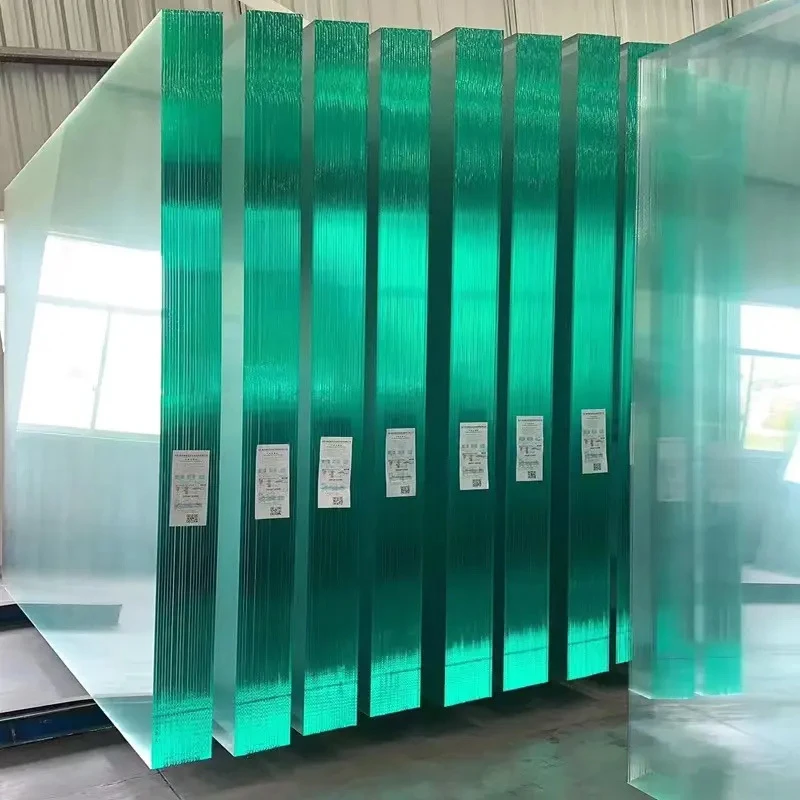Understanding the Market Dynamics of 6mm Float Glass Prices
Float glass has become an essential material in various industries, ranging from construction and architecture to automotive and interior design. Among the various specifications available, 6mm float glass has gained considerable attention due to its versatility and robustness. In this article, we will explore the factors influencing the price of 6mm float glass, recent trends in the market, and the implications for consumers and businesses alike.
What is Float Glass?
Float glass is manufactured using a process that involves floating molten glass on molten tin. This method results in a smooth and flawless surface, making it ideal for applications where clarity and aesthetics are crucial. The 6mm designation refers to the thickness of the glass, which provides strength and durability while maintaining a lightweight profile. This thickness is commonly used for windows, doors, and various interior applications, making it a staple in both residential and commercial construction.
Factors Affecting the Price of 6mm Float Glass
1. Raw Material Costs The primary raw materials for float glass production are silica sand, soda ash, and limestone. Fluctuations in the prices of these materials directly impact the production cost of float glass. For instance, an increase in silica sand prices due to supply shortages can lead to higher prices for finished glass products.
2. Energy Prices The glass manufacturing process is energy-intensive. Changes in energy prices, particularly for natural gas and electricity, can significantly affect the overall production cost. As energy prices rise, manufacturers may pass these costs onto consumers, resulting in higher prices for 6mm float glass.
3. Supply and Demand The balance between supply and demand is a critical determinant of pricing. In regions where construction activity is booming, the demand for float glass can outstrip supply, leading to price increases. Conversely, during economic downturns, a drop in construction projects can result in excess supply and lower prices.
4. Technological Advancements Innovations in manufacturing technology can play a role in price fluctuations. Advances that increase efficiency and reduce waste can lead to lower production costs, while newer products with enhanced features (e.g., energy-efficient coatings) may command premium prices.
6mm float glass price
5. Import and Export Tariffs Trade policies and tariffs can also impact the price of float glass. For example, tariffs on glass imported from certain countries can lead to increased prices in domestic markets, influencing overall pricing structures.
Current Market Trends
As of 2023, the global market for float glass, including 6mm variants, has shown signs of recovery following the disruptions caused by the COVID-19 pandemic. Increased investment in construction projects, particularly in emerging economies, has created robust demand for glass products. In addition, there is a growing trend toward sustainable building materials, which may further drive demand for high-quality float glass options.
However, potential challenges remain. The ongoing fluctuations in raw material and energy prices, coupled with geopolitical tensions that may affect trade, imply that market participants should remain vigilant. Manufacturers and suppliers may need to adapt quickly to these changes to maintain competitiveness.
Implications for Consumers and Businesses
For consumers, understanding the factors influencing the price of 6mm float glass can lead to more informed purchasing decisions. Whether for home renovations or new constructions, being aware of market trends can help in negotiating better prices and selecting the right suppliers.
For businesses, being proactive in sourcing, inventory management, and market analysis will be critical to navigating price fluctuations. Engaging with multiple suppliers, considering long-term contracts, and exploring alternative materials when necessary could mitigate the impact of rising prices.
Conclusion
The price of 6mm float glass is subject to a variety of influences, from raw material costs to market demand dynamics. By staying informed about these factors, both consumers and businesses can make strategic decisions regarding their glass procurement needs. As we look forward, the demand for high-quality float glass remains strong, but industry stakeholders must be prepared to adapt to a continually evolving market landscape.
 Afrikaans
Afrikaans  Albanian
Albanian  Amharic
Amharic  Arabic
Arabic  Armenian
Armenian  Azerbaijani
Azerbaijani  Basque
Basque  Belarusian
Belarusian  Bengali
Bengali  Bosnian
Bosnian  Bulgarian
Bulgarian  Catalan
Catalan  Cebuano
Cebuano  Corsican
Corsican  Croatian
Croatian  Czech
Czech  Danish
Danish  Dutch
Dutch  English
English  Esperanto
Esperanto  Estonian
Estonian  Finnish
Finnish  French
French  Frisian
Frisian  Galician
Galician  Georgian
Georgian  German
German  Greek
Greek  Gujarati
Gujarati  Haitian Creole
Haitian Creole  hausa
hausa  hawaiian
hawaiian  Hebrew
Hebrew  Hindi
Hindi  Miao
Miao  Hungarian
Hungarian  Icelandic
Icelandic  igbo
igbo  Indonesian
Indonesian  irish
irish  Italian
Italian  Japanese
Japanese  Javanese
Javanese  Kannada
Kannada  kazakh
kazakh  Khmer
Khmer  Rwandese
Rwandese  Korean
Korean  Kurdish
Kurdish  Kyrgyz
Kyrgyz  Lao
Lao  Latin
Latin  Latvian
Latvian  Lithuanian
Lithuanian  Luxembourgish
Luxembourgish  Macedonian
Macedonian  Malgashi
Malgashi  Malay
Malay  Malayalam
Malayalam  Maltese
Maltese  Maori
Maori  Marathi
Marathi  Mongolian
Mongolian  Myanmar
Myanmar  Nepali
Nepali  Norwegian
Norwegian  Norwegian
Norwegian  Occitan
Occitan  Pashto
Pashto  Persian
Persian  Polish
Polish  Portuguese
Portuguese  Punjabi
Punjabi  Romanian
Romanian  Russian
Russian  Samoan
Samoan  Scottish Gaelic
Scottish Gaelic  Serbian
Serbian  Sesotho
Sesotho  Shona
Shona  Sindhi
Sindhi  Sinhala
Sinhala  Slovak
Slovak  Slovenian
Slovenian  Somali
Somali  Spanish
Spanish  Sundanese
Sundanese  Swahili
Swahili  Swedish
Swedish  Tagalog
Tagalog  Tajik
Tajik  Tamil
Tamil  Tatar
Tatar  Telugu
Telugu  Thai
Thai  Turkish
Turkish  Turkmen
Turkmen  Ukrainian
Ukrainian  Urdu
Urdu  Uighur
Uighur  Uzbek
Uzbek  Vietnamese
Vietnamese  Welsh
Welsh  Bantu
Bantu  Yiddish
Yiddish  Yoruba
Yoruba  Zulu
Zulu 

